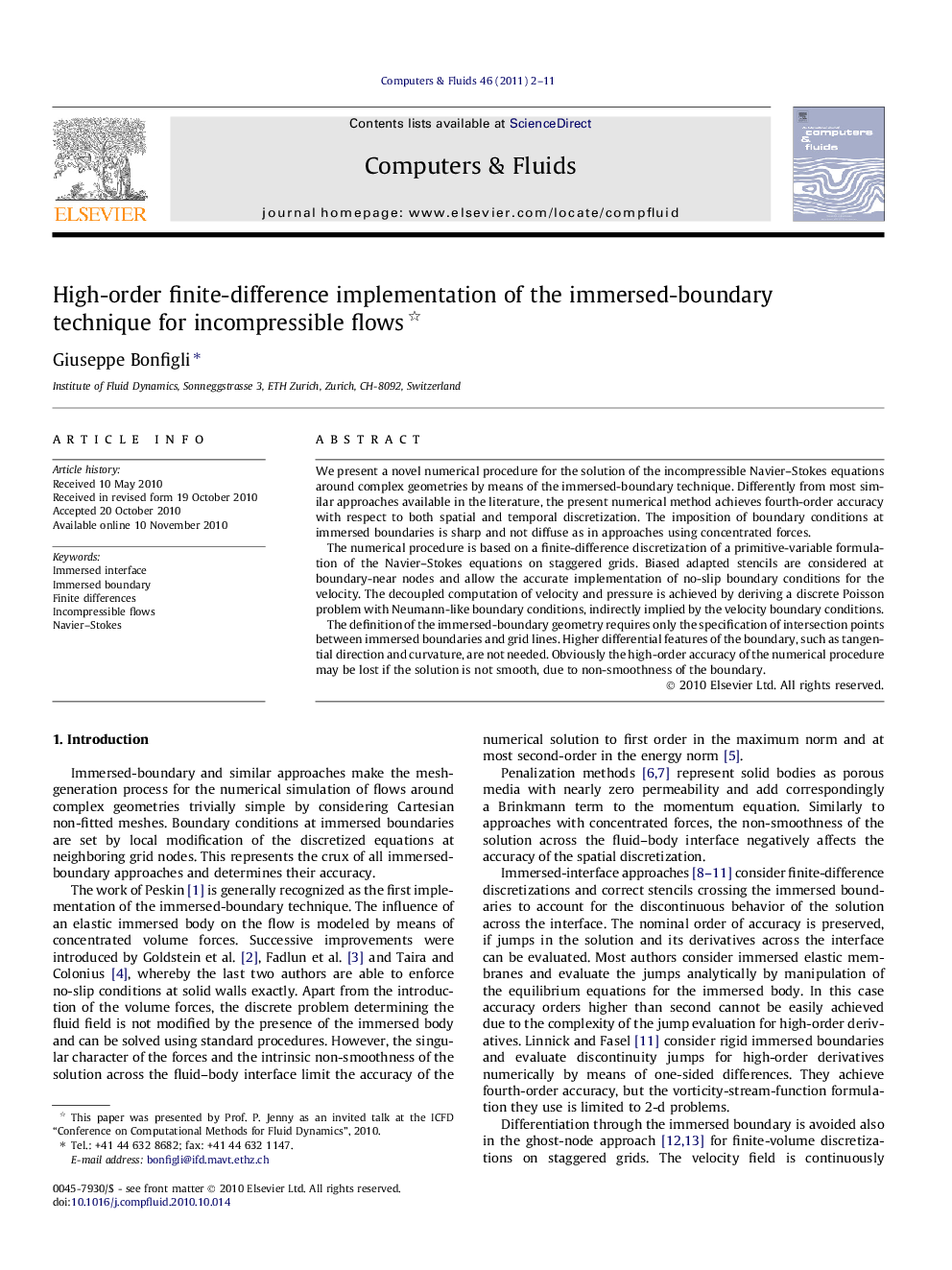| Article ID | Journal | Published Year | Pages | File Type |
|---|---|---|---|---|
| 762752 | Computers & Fluids | 2011 | 10 Pages |
We present a novel numerical procedure for the solution of the incompressible Navier–Stokes equations around complex geometries by means of the immersed-boundary technique. Differently from most similar approaches available in the literature, the present numerical method achieves fourth-order accuracy with respect to both spatial and temporal discretization. The imposition of boundary conditions at immersed boundaries is sharp and not diffuse as in approaches using concentrated forces.The numerical procedure is based on a finite-difference discretization of a primitive-variable formulation of the Navier–Stokes equations on staggered grids. Biased adapted stencils are considered at boundary-near nodes and allow the accurate implementation of no-slip boundary conditions for the velocity. The decoupled computation of velocity and pressure is achieved by deriving a discrete Poisson problem with Neumann-like boundary conditions, indirectly implied by the velocity boundary conditions.The definition of the immersed-boundary geometry requires only the specification of intersection points between immersed boundaries and grid lines. Higher differential features of the boundary, such as tangential direction and curvature, are not needed. Obviously the high-order accuracy of the numerical procedure may be lost if the solution is not smooth, due to non-smoothness of the boundary.
